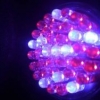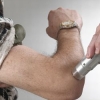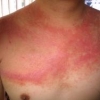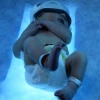Effetto sistemico della fototerapia con LED a 830-nm sulla cicatrizzazione delle ferite da scottatura
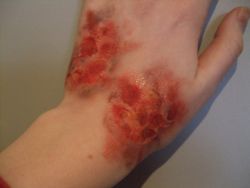 Il presente studio controllato ha valutato l'effetto sistemico della fototerapia con LED a 830- nm nei modelli di roditori.
Il presente studio controllato ha valutato l'effetto sistemico della fototerapia con LED a 830- nm nei modelli di roditori.
MATERIALI E METODI:
Due topi glabri HR-1 e 3 ratti glabri HWY/Slc sono stati divisi in due gruppi: il gruppo di trattamento (Gruppo Tx, un topo, due ratti) e il gruppo di controllo (Gruppo Con, un topo, un ratto). Tutti gli animali sono stati sottoposti ad un'identica scottatura di controllo di 12 mm × 12 mm, su tre siti del dorso con un laser CO(2) frazionale ablativo. Le ferite sono state protette con una medicazione in film. L'addome dei soggetti appartenenti al Gruppo Tx è stato irradiato con una varietà di LED a 830-nm, al tempo immediatamente successivo al trattamento con CO(2) e poi dopo 1, 5 e 6 giorni dall'irradiazione laser. La guarigione delle ferite è stata valutata macroscopicamente grazie alla fotografia clinica.
RISULTATI:
Il processo di guarigione delle ferite nel gruppo Tx, rispetto al gruppo Con, era già evidente durante la valutazione dopo due giorni dal trattamento. Alla valutazione finale (giorno 7 dopo l'ustione), nessun sito del Gruppo Con (sei ferite) mostrava il 100% della guarigione, il recupero era superiore al 70% in quattro siti e inferiore al 50% in due siti. Dei nove siti del Gruppo Tx, in tre è stato osservato un recupero del 100%, in cinque siti dell'oltre 70% e una sola ferita si è aggravata a trauma.
CONCLUSIONI:
La fototerapia LED sull'addome ha prodotto una veloce cicatrizzazione delle ferite uniformi da ustione, rispetto agli animali con le stesse ferite da bruciature che non hanno ricevuto la fototerapia LED, suggerendo fortemente l'effetto sistemico della fototerapia.
Storia della pubblicazione:
Titolo: The systemic effect of 830-nm LED phototherapy on the wound healing of burn injuries: A controlled study in mouse and rat models.
Rivista: J Cosmet Laser Ther. 2012 Apr;14(2):107-10. Epub 2012 Feb 28.
Autori: Lee GY, Kim WS.
Affiliazioni: Kangbuk Samsung Hospital, Sungkyunkwan University School of Medicine, Dermatology, Seoul, 137-470, Republic of Korea.
Abstract:
BACKGROUND:
The present controlled study assessed the systemic effect of 830-nm LED phototherapy in rodent models.
MATERIALS AND METHODS:
Two HR-1 hairless mice and 3 HWY/Slc hairless rats were divided into two groups: the treatment group (Tx Group, one mouse, two rats) and the control group (Con Group, one mouse, one rat). All animals received an identical 12 mm × 12 mm control burn over three sites on the dorsum with a fractional ablative CO(2) laser. Wounds were protected with a film-type dressing. The abdomen of the Tx Group subjects was irradiated with an 830-nm LED array immediately post CO(2) treatment and then at 1, 5 and 6 days post laser irradiation. Wound healing was assessed macroscopically from the clinical photography.
RESULTS:
At the 2-day post-laser assessment, the healing process in the wounds in the Tx Group was already apparent compared with the Con Group. At the final evaluation (post-burn day 7), no site on the Con Group (six wounds) showed 100% healing, recovery was over 70% in four and lower than 50% in two sites. Of the nine Tx Group sites, 100% recovery was seen in three sites, over 70% in five sites and one wound was exacerbated through trauma.
CONCLUSIONS:
LED phototherapy on the abdomen produced faster wound healing of the uniform burn wounds than in animals with the same burn wounds that did not receive LED phototherapy, strongly suggesting the systemic effect of phototherapy.
https://www.youtube.com/@djfdm

